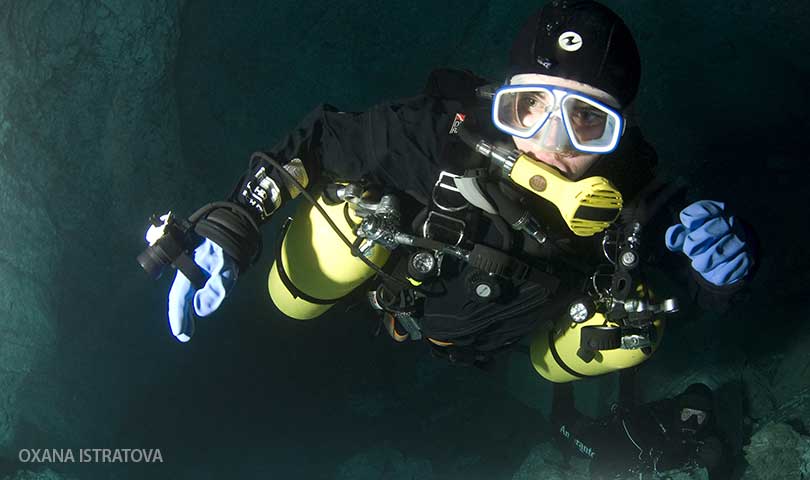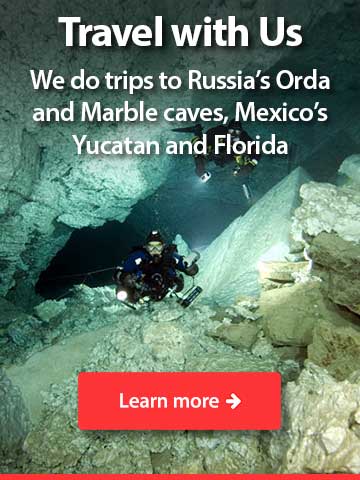Sidemount

There are many reasons to sidemount beyond just cave diving, including:
- If you travel to areas where back-mounted doubles are not available, sidemount enables you to convert any two single cylinders into a working tech-diving rig.
- The configuration of some wrecks make them better suited to sidemount than backmount.
- Sidemount eliminates the potential failure point which manifolds present in tech diving, enabling each diver to potentially solve any gas problem he or she may encounter by themselves.
- If neck, back or leg problems make it difficult or risky to walk to the water wearing heavy, back-mounted doubles, sidemount may make it possible you to dive anyway.
Many cave diving students want to transition to sidemount at the same time they learn to cave dive. This course provides them with the essential training they need to do so.
We generally combine this course with our Tech Overhead program, for students needing to meet the prerequisites for Cave Diver training. We can also teach it as a standalone course. Ask us which option would best meet your needs.
Who Can Take This Course?
Exact prerequisites may vary by agency but, in general, you:
- Must be at least 12 years old.
- Should possess a minimum of Advanced Open Water Diver certification (or equivalent).
- Either be able to answer No to all the questions on an industry-standard Medical History form or obtain a physician’s approval for diving before the start of the course. If you require a physician’s approval, the doctor must sign off on the standard Medical Exam form. Forms signed no more than twelve months before the start of the course are acceptable — provided you have had no change in medical history since then.
What is Involved?
This course typically consists of:
- Self-study.
- Two days of in-water training.
- Four training dives and/or 100 minutes of Actual Bottom Time.
Where Does the Course Take Place?
Most of our students do their training in north-central Florida’s freshwater springs and caves — however, you are by no means limited to this. We regularly conduct courses in Russia and Mexico’s cenotes. The choice is up to you.
How Much Does it Cost?
The exact cost of this program will depend on a variety of factors, such are:
- Will you be taking this course by yourself or with one or two other friends or family members?
- Are there any prerequisite courses you need to take in conjunction with the course which will result in your desired certification?
- Where will you be taking the course? (Courses conducted in north-central Florida generally have the lowest cost.)
Once we determine your specific needs, we can give you a firm price for all the required training. Bear in mind, the course fees generally cover just the cost of instruction. You are responsible for:
- Transportation to and from the course location and dive sites.
- Any overnight accommodations and meals.
- Supplying all required equipment and gas fills.
The base price for this course is US$400/student. This assumes you are taking the course with at least one other person, and doing all your training here in north-central Florida.
What Equipment Will You Need?
The minimum equipment requirements for most courses include:
- Mask and adjustable fins.
- Adequate exposure protection for the environment.
- Two properly configured sidemount cylinders (we can help you set these up).
- An appropriate sidemount harness/air cell with adequate lift capacity.
- Two separate regulators.
- A depth gauge/timer or dive computer.
Some very specific requirements pertain to each items. Do not make any equipment purchases without first speaking to your instructor.
Note: if you will be traveling by air to the course site, we can help you to arrange the rental of heavier items such as tanks at your destination.
How Do You Sign Up?
The best way to get started is to simply contact us.

